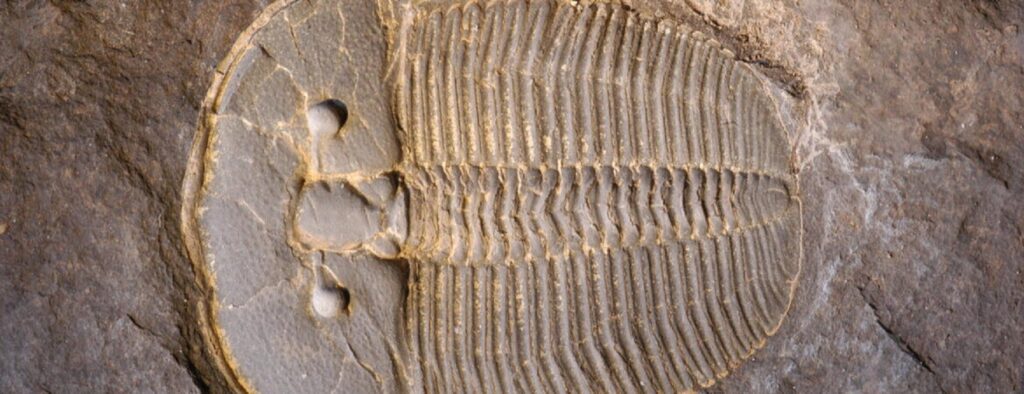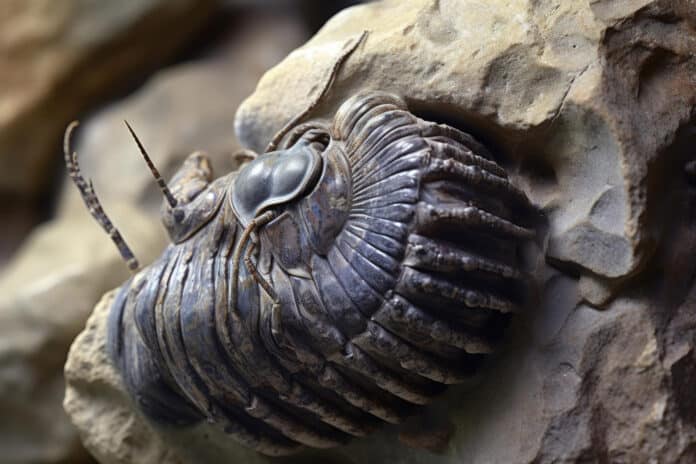Trilobites were ancient sea creatures that lived hundreds of millions of years ago. They faced various environmental changes during their time, and scientists have been curious about how they survived. A new study explores the strategies trilobites likely used to adapt and thrive in changing environments.
Scientists from the University of California-Riverside have figured out how a particular type of trilobite, an ancient sea creature related to spiders and lobsters, defended itself from predators and survived changes in Earth’s oxygen levels. Trilobites lived in the sea for a long time, even longer than the time when dinosaurs were around. They went through tough times, including two significant events where many species died out but survived.
Trilobites had rigid bodies divided into three parts: a head, a middle section, and a tail. There are more than 20,000 kinds of trilobites that we know about, and most of them have a set number of segments in their middle part when they grow up. However, in a trilobite called Aulacopleura koninckii, scientists found something interesting.
When Aulacopleura koninckii were young, they all looked similar in size and shape. But when they became adults, their middle sections could have different numbers of segments, ranging from 18 to 22 segments. This helped them defend themselves by fitting perfectly when they rolled into a protective position. They lived when Earth’s oxygen levels changed a lot, and this ability to adjust their body might have helped them survive.

Nigel Hughes, paleobiologist and corresponding author of a new study about this trilobite, said, “My collaborators and I thought this species was weird. We couldn’t understand why Aulacopleura bodies varied and others living simultaneously had a constant number. Seeing trilobites with variable numbers of segments in the thorax is like seeing humans born with different numbers of vertebrae in their backs.”
Researchers were curious about why some trilobites had an unusual number of body segments and its impact on their protection. They discovered answers in a recent study published in the “Proceedings of the Royal Society B: Biological Sciences” journal. Like modern “rollie pollies,” trilobites curled up to protect themselves from more giant creatures.
A tiny trilobite called Aulacopleura with fewer than 18 body segments could effectively curl up for defense, but as it grew and gained more segments, it couldn’t curl up as neatly, leaving a gap. The researchers used computer models and found that when Aulacopleura with numerous segments sensed danger, they curled up but let their tails stick out a bit, maintaining protection without exposing vital parts to predators. The researchers noted that other defensive strategies might have left vulnerable spaces on the sides, making this adaptation advantageous.
The researchers wanted to know why a certain trilobite had different numbers of body segments. They discovered that these segments held legs that acted as gills for breathing. More segments meant more area for breathing. This helped the trilobites survive in places with less oxygen, where other creatures couldn’t live. When the seafloor had low oxygen, predators had to move to areas with more oxygen, but these trilobites with extra gills could stay in the same place without being caught.
Understanding how these trilobites adapted to challenges helps scientists learn how survival strategies change. How these trilobites changed explains how modern insects and spiders’ ancestors evolved. This shows that being adaptable is important for survival.
Journal Reference:
- Jorge Esteve and Nigel C. Hughes., Developmental and functional controls on enrolment in an ancient, extinct arthropod. Proceedings of Royal Society B. DOI: 10.1098/rspb.2023.0871.
